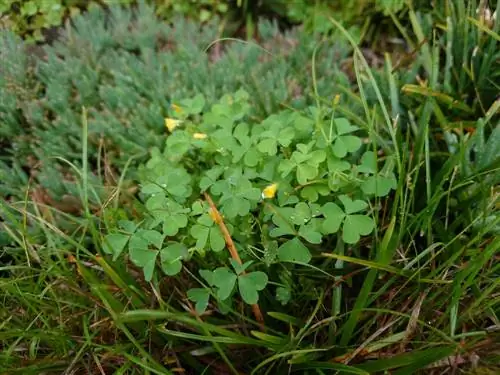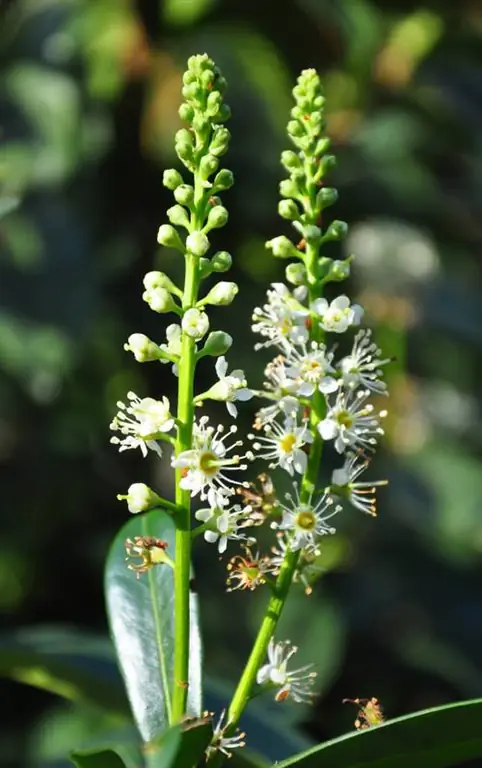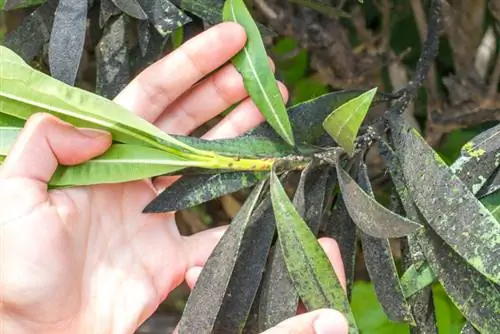- Author admin [email protected].
- Public 2023-12-16 16:46.
- Last modified 2025-01-23 11:22.
While the version of false clover known as lucky clover is often given as a gift at New Year's, sorrel has a disruptive effect in the garden. Here you will find out what characterizes this prolific weed and how you can get rid of it.

How to identify and remove false clover?
False clover differs from true clover in red or multi-colored leaves, four-leaf clovers and missing flowers. To remove false clover in the garden, prevent seed formation, remove roots, weed or use weed killer and use lime to control.
How is false clover different from real clover?
True clover usually growsthree-leavedand producesgreen leavesand aflower. On the other hand, if the clover is four-leaf, has red or multicolored leaves, or does not produce flowers, it is probably false clover. False clover can overgrow lawns and be very disruptive. The name false clover can refer to various plants. The following types of clover in particular are often referred to as false clover:
- Sorrel (Oxalis)
- Horn trefoil (lotus)
How do I get rid of fake clover?
You have to preventseed formationas well as theremove roots This is the only way you can prevent further spread and successfully combat wood sorrel. To prevent weeds from growing on a lawn, regular mowing and scarifying are worthwhile. However, if the wood sorrel has already sprouted, tougher measures are necessary. You have these two options:
- Weeding and cutting out
- Use a weed killer
How does false clover reproduce?
False clover spreads simultaneously via runners ofrootsandvia seeds. The plant therefore follows a double propagation strategy. But it can spread explosively via its seeds. In this case that is meant quite literally. Small seed capsules grow on wood sorrel. As soon as the seeds are ripe, they open and throw their contents over two and a half meters into the surrounding area.
False clover as lucky clover
Oxalis tetraphylla is a false clover that is traditionally given as a good luck charm for New Year. This sorrel plant owes its name to lucky clover to its distinctive leaf shape. The false clover has four-leaf clovers. These are considered good luck charms in our culture. Accordingly, the small pots planted with lucky clover make their big appearance right at the beginning of the year.
Tip
Use lime to combat
A weak point of sorrel is that this plant does not like lime. If you don't use it to drive away other plants, liming the location may well be recommended. With a bit of luck, you'll be able to put False Clover on the run.






